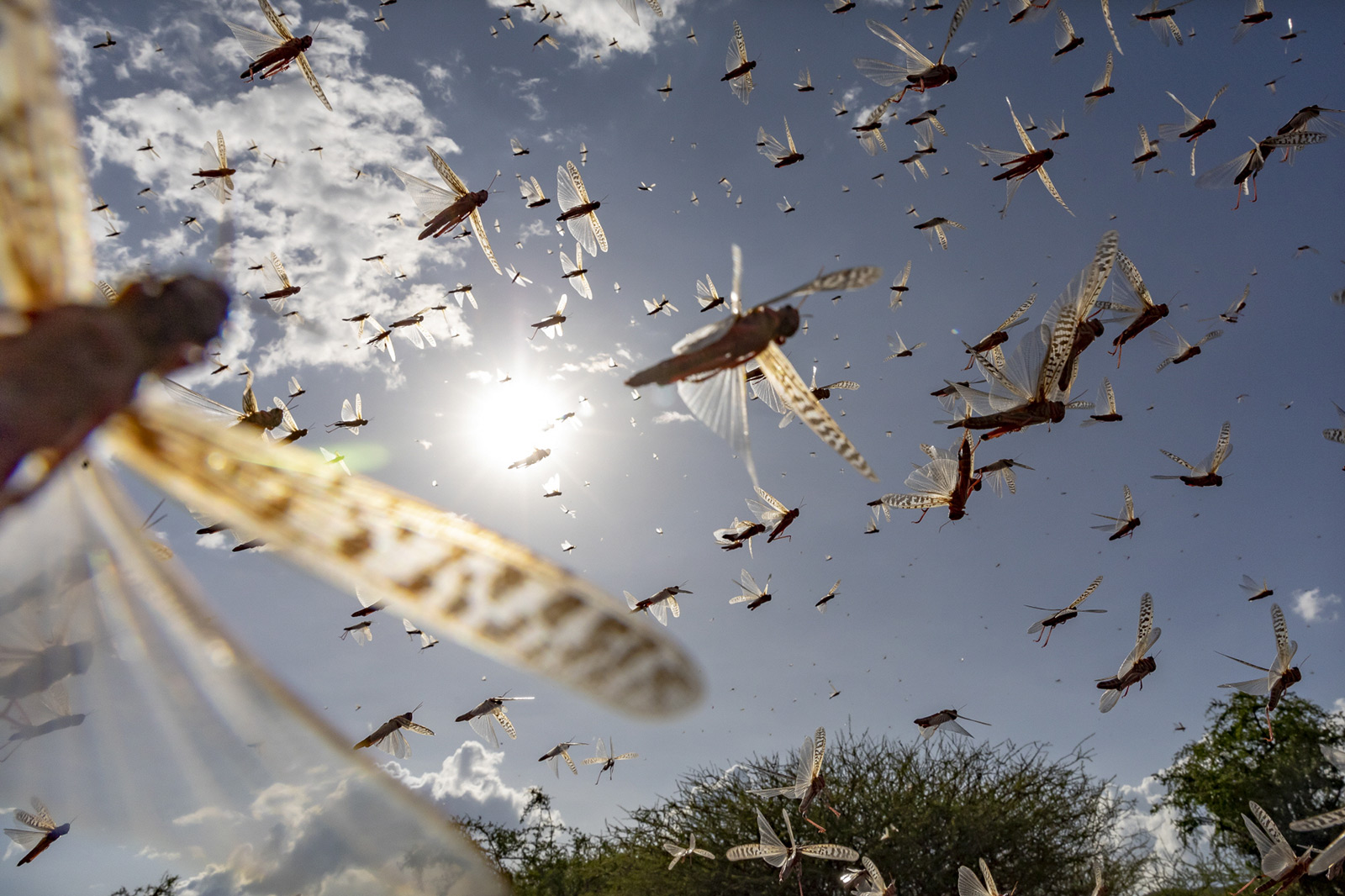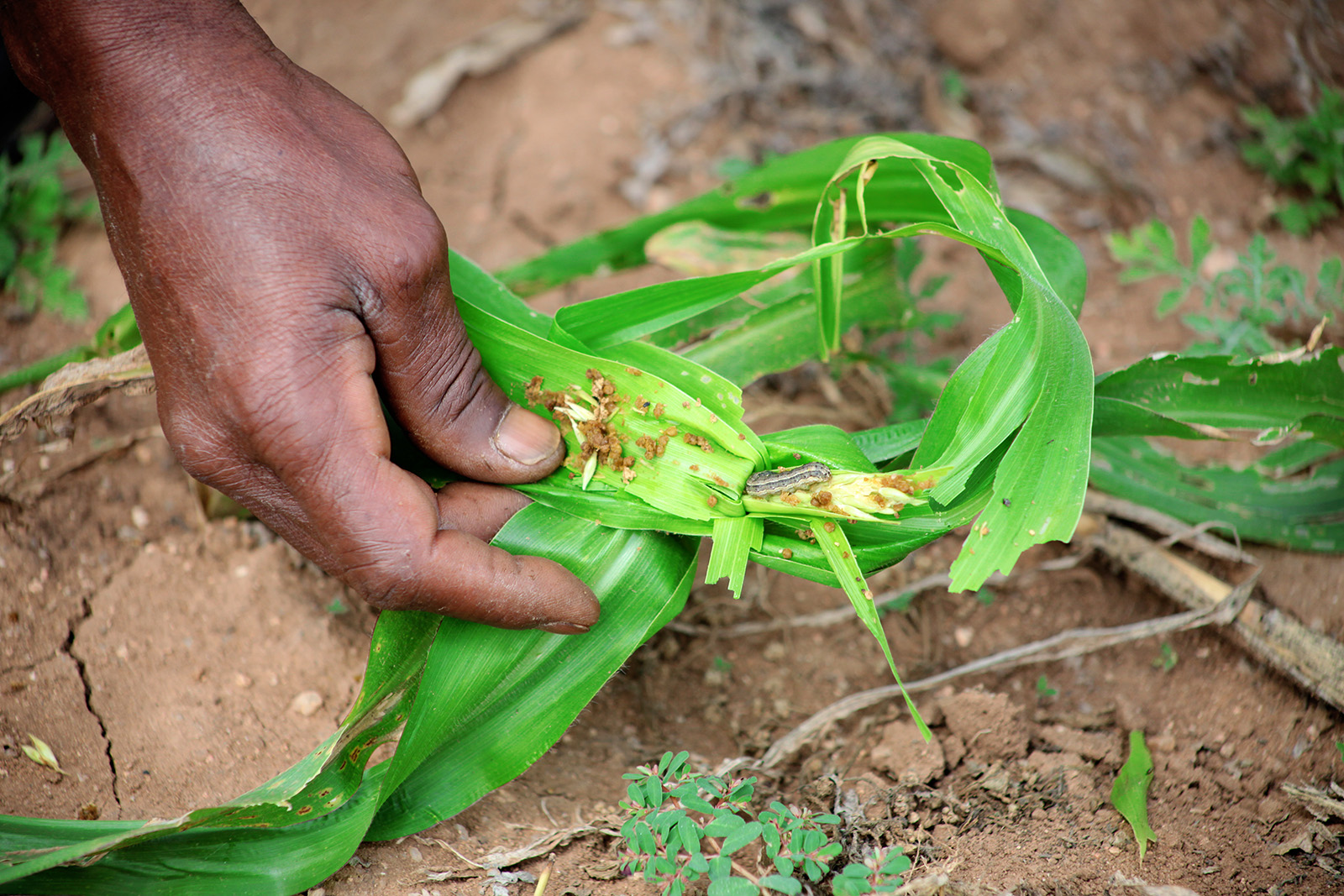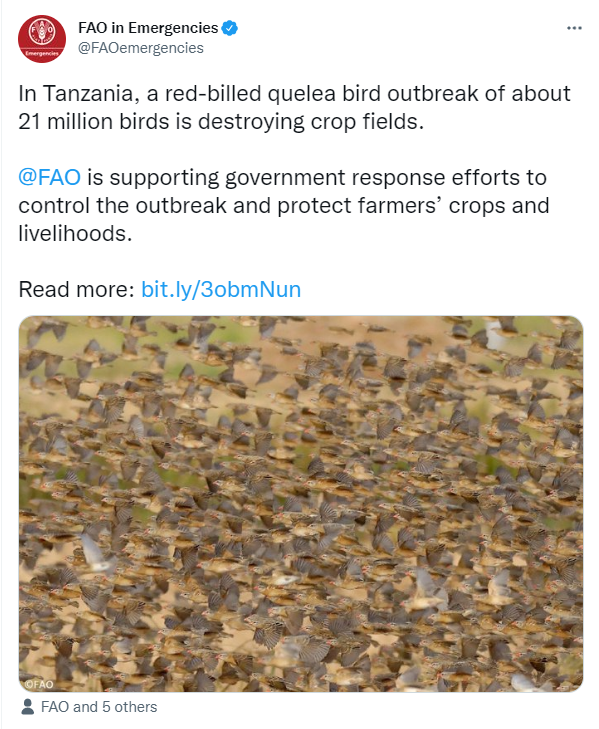20 of the fastest warming nations globally are in Africa. The continent is facing the harsh impact of climate change, leading to increased pressure on food resources for both man and creatures. Could we be heading for a scramble for resources against pest?
The Tomorrow War - Climate Change, Hunger, and Swarming Pests
September 29, 2022

Quelea birds in flight. A typical swarm can number in the millions.
In 2021, UNDP invested $1.3 billion in development and humanitarian response on the continent of Africa. A significant portion of that was directed towards climate change adaptation and resilience building strategies such as climate smart agriculture. However, an unequal amount of attention has been paid to pests also competing for the same food resources. Specifically on swarming pests which destroy at a large scale. The United Nations Food and Agriculture Organisation (FAO) estimates that agricultural yield losses attributed to pests could lead to a global food crisis that affects up to 10% of the world’s population.
This blog is the first in a learning cycle series that explores the nexus between swarming pests and climate change in Zimbabwe and on the continent. We will engage novel partners, explore emerging technologies, and interact with communities to discover what can be done to sustainably control swarming pests in a future where climate change is favouring their proliferation.
The blog highlights the three most common swarming pests in Africa, and then focuses on one that is most concerning to climate change adaption efforts: The red-billed quelea bird.
Strength in numbers - why creatures swarm
To understand their impact, we need to understand the behaviour of swarming. Insects and birds flock for three reasons:
-
When migrating from one place to another, typically in search of favourable living conditions such as food and habitat.
-
To increase the odds of mating during reproduction - this is also subject to weather and seasonal variations as swarming happens during a time when conditions are ideal for their offspring to thrive.
-
As a defence mechanism when threatened by an external force.
Signals of change. The Swarming pest – Climate change Nexus
Research has shown a direct relationship between climate change and swarming pests in Africa. Considering the three causes of swarming, it is easy to see how a change in weather patterns plays a significant role in the formation and sustenance of swarms. Changes in temperature and precipitation can push or pull migratory entities to search for favourable seasonal conditions. In turn, these ideal conditions lead to increased reproduction which amplifies the swarms.
Desert Locusts

A desert locusts swarm flies in East Africa. Locusts threaten food security and livelihoods because there occurrence coincides with the beginning of the long rains and the planting season.
Locusts are normally confined to arid regions of Africa. Here, their numbers will naturally stay low. However, in 2019, heavier rains caused by a climate change induced Indian Ocean Dipole saw the Horn of Africa receive up to 8 times its average rainfall. As reported by UNEP, this created favourable breeding conditions for the flying pest, resulting in the worst locust plague continent has experienced in 25 years. The swarms have continuously affected 23 countries, with the most affected being Ethiopia, Kenya and Somalia, Uganda, South Sudan and Tanzania. The World Bank estimated damages and losses in agricultural produce due to the locusts at US$8.5 Billion. Hundreds of millions of dollars more have been spent on control measures. The adverse impact on the environmental is immeasurable.
Fall Army Worm

Fall armyworm can attack maize at all growth stages
The Fall Army Worm, a Brazil native, was first discovered in Africa in 2016. In just six years, it has become a threat to food security, attacking the staple cereal in many sub-Saharan countries, Maize. Although the worm can feed on more than 350 plant species, it’s impact in maize is the worst as it feeds on at all stages of its plant growth cycle.
Unlike the locusts, the Fall Army Worm breeds better when there is less rainfall. It was first recorded in Zimbabwe in September 2016, shocking an agricultural system that was already suffering from prolonged drought periods, leaving almost 5.2 million people food insecure. In 2018, the pest destroyed 47% of the nations’ maize yield.
This experience isn’t unique to Zimbabwe. Other Southern African countries such as Zambia and South Africa faced a similar demise. Annual yield losses for maize in Sub Saharan Africa are estimated to be between US$2.5-6 billion. Enough maize to feed the entire region.
Red-billed Quelea Birds

The Red-billed Quelea is a small brownish bird of the weaver family that is endemic to Africa. Queleas are the most populous bird on earth with around 1.8 billion birds estimated to be in the wild, spread across 25 countries. The bird prefers eating grass seeds. However, due to climate change and human behaviour such as clearing land for farming or expanding cities, the bird is turning to small grain crops such as sorghum and millet.
There is not much data on the economic figures of the quelea bird’s destructive habit/behaviour. However, the Migratory Pests and Biosecurity Control Department under the Ministry of Agriculture in Zimbabwe notes that about 95% of wheat damage in Zimbabwe is due to the bird.

Estimate distribution of red-billed quelea in Africa
Small grain cultivation is one of the climate smart strategies that UNDP Zimbabwe is employing to build resilience through the Zimbabwe Resilience Building Fund and the Climate Resilient Livelihoods (Green Climate Fund) initiatives.
Tiny bird, tonnes of damage
Small grains such as millet and sorghum play a major role in adapting to climate change and fighting hunger because of their tolerance to drought. The Government and many development agencies have made significant investments in promoting the cultivation of small grains as a substitute for maize.
As one of the major barriers to the adoption of small grains, quelea birds are the biggest enemy in a “tomorrow war”. Controlling them now has key implications on the continent’s food security today and in the future.

Social media post from the Permanent Secretary in the Ministry of Information, Publicity and Broadcasting Services
The Accelerator Lab has prioritised the quelea bird as a pest of concern because of the following four reasons:
- One bird consumes up to 10g of grain per day. A swarm of 100,000 will consume up to a ton (1,000kgs) of grain per day. Approximately the same amount of grain an average family of six people consumes per year. But beyond that, once full, quelea birds continue to do more damage as they are become playful and wasteful. A typical quelea swarm can easily reach 2 million birds and beyond. In a single day, they can devour enough food to feed an entire community for a year!
- A lack of comprehensive economic figures on its destructive nature makes quelea birds a silent crisis. The last comprehensive study of the bird’s economic impact in Sub-Saharan Africa was done in 1989.
- Another reason why the Accelerator Lab picked the bird as a pest of increased concern is a crucial signal of change picked up in an interview the head of the Migratory Pests and Biosecurity Control Department, Shingirayi Nyakutukwa. In January 2022, a swarm of quelea birds attacked a commercial maize farm, eating the crop at soft dough stage. This is the first time that the birds have been observed attacking maize at large scale. Typically, the birds do not go after maize and sunflower as these crops are difficult to eat for the small birds. This discovery is worrisome as it could potentially signify a shift in the bird’s behaviour and one that could be climate change driven. As their population increase and traditional grains of choice deplete due to changing conditions, the birds will likely consider other crops for food.
- Lastly, the current successful method of control for quelea birds has a huge environmental impact. This will be discussed in detail in the next blog in this series.

At the time of writing, there is a quelea bird outbreak in Tanzania with an estimated 21 million bird count, destroying crops.
Man vs bird
Having established that the climate change – swarming pest nexus is an emerging signal with significant implications on the fight against hunger in Africa, UNDP Zimbabwe Accelerator Lab is looking forward to joining the tomorrow war by unleashing the largest learning network to explore new ways of controlling the quelea birds.
The lab hopes to add more value to the work that institutions like the Desert Locust Control Organisation, FAO and governments across Africa are doing to control swarming pests at scale.
In the coming months we will surface solutions from local communities, engage global subject experts on the birds, launch innovation challenges with tertiary institutions and test ideas in the field with FAO and Plant Quarantine and Migratory Pests and Biosecurity Control Department under the Ministry of Agriculture in Zimbabwe.
The next blog we will look at current efforts to control the bird and how they have come short.
So don’t fly away, stay tuned!
Continue reading the 2nd blog in the Tomorrow War series.
The Tomorrow War - Controlling Quelea Swarms and Ultimately Africa's Future

 Locations
Locations
